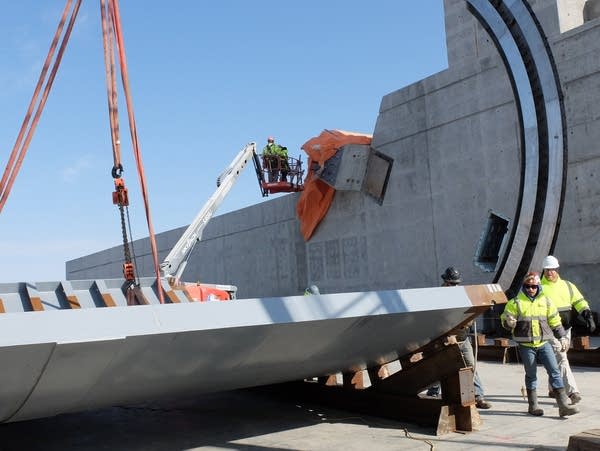Fargo-Moorhead flood control project advances amid worker shortage

Workers prepare to assemble large metal gates that will control the flow of water into flood diversion channel. Work on the 30 mile long channel starts this summer.
Dan Gunderson | MPR News
Go Deeper.
Create an account or log in to save stories.
Like this?
Thanks for liking this story! We have added it to a list of your favorite stories.


